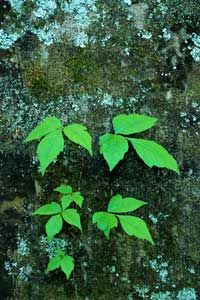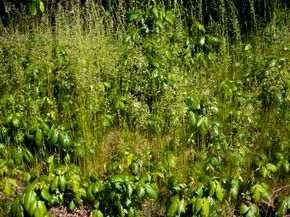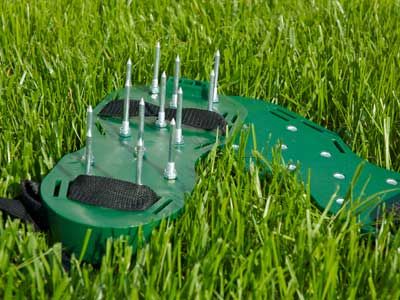Poison ivy is the dreaded scourge of many a summer camper, hiker and even Batman. Once it makes contact with sensitive skin, a telltale blistery rash can wreak havoc on the body. Along with its relatives, poison oak and poison sumac, the plant grows in every state in the continental United States and affects up to 85 percent of those who cross its path [source: American Academy of Dermatology].
Before European settlement, Native Americans knew to beware poison ivy's wrath. In fact, Capt. John Smith noted its effects, making poison ivy the first allergic disease recognized in the New World [source: National Institute of Allergy and Infectious Diseases]. Today, poison ivy may be growing more powerful due to the rise of carbon emissions in the atmosphere. A 2006 study published by the National Academy of Sciences reported that heightened levels of carbon in the air increase the amount of the potent form of poison ivy's active chemical, urushiol, by 5 percent [source: Milius].
Advertisement
Urushiol is an oil found inside poison ivy plants. It escapes easily through tiny tears or holes in the leaves or stems. From there, the oil can reach your skin by direct contact or rubbing off on pet fur, clothing or tools. Unless you wash the exposed skin within a few minutes, you'll experience an allergic reaction within 12 to 48 hours. In addition to acting quickly, the chemical also can remain active -- and able to incite a miserable rash -- for years. Say you walk through a patch of poison ivy and get urushiol all over your jacket; you could catch poison ivy from that unwashed jacket a year later [source: Stehlin].
Many children learn the rhyme "leaves of three, let it be" to teach them how to spot poison ivy in the wild. But completely avoiding the plant while tramping around outdoors can be as difficult as resisting the urge to scratch its tingling itch. It may be entwined in other plants, camouflaged by brush or you may simply not be watching out for it until it's too late. Perhaps even more disconcerting, eradicating poison ivy from your property requires getting a little up close and personal with the three-leafed nuisance.
Advertisement


